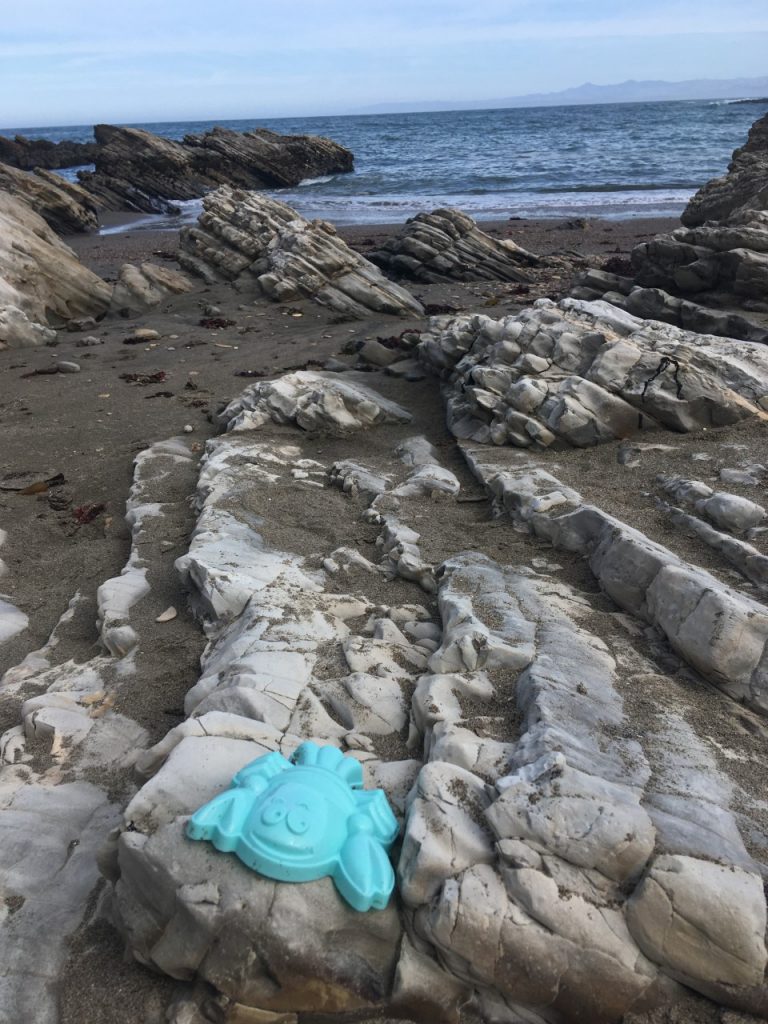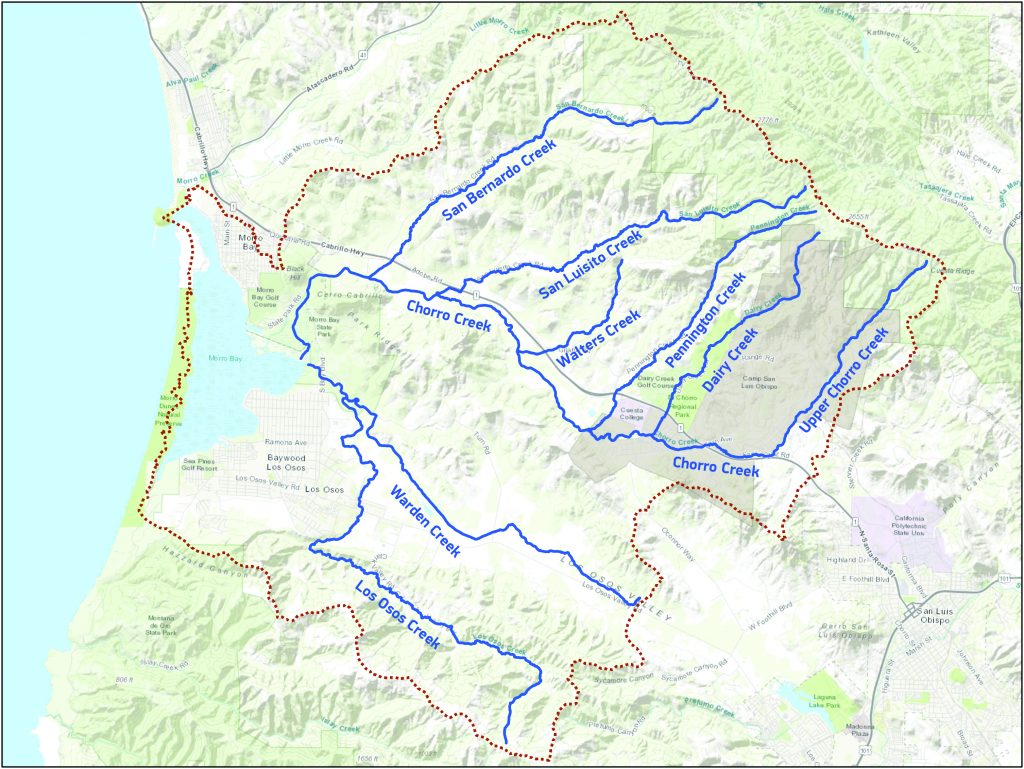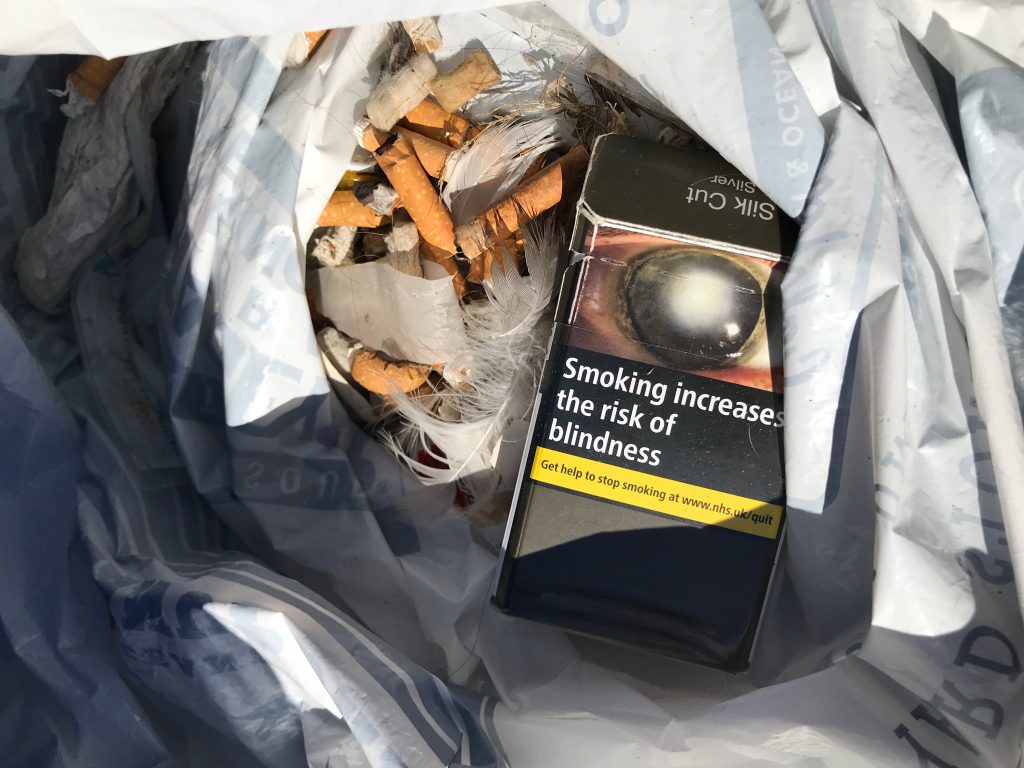It’s almost time for the annual Creeks to Coast Cleanup
September is Coastal Cleanup month. It’s a great time to get outside and take care of Morro Bay’s beaches, the bay itself, and the creeks that feed it. To help everyone take on this task, our friends at ECOSLO host an annual Creeks to Coast Cleanup. This county-wide effort stretches from the upland creeks, down to the lowlands, and out to the sea.
Even inland cleanups help our coast
It might seem strange to host a coastal cleanup inland, but it makes a lot of sense if you think of the way water moves across the land. When it rains, water runs downhill. It washes down gutters, storm drains, and creek banks, pulled by gravity to the lowest point. When the water eventually ends up in a creek, it flows into larger creek or river channels, and eventually ends up in the ocean. If trash has blown or washed into those creeks, it follows the same path, eventually ending up on our beaches, bays, and in the open ocean.
An area of land that channels all of its precipitation to one body of water is called a watershed. Everyone—no matter how near or far from the beach—lives in a watershed. This means that, no matter where you are when you participate in a cleanup, you’re helping keep our coast clean.
The Morro Bay Watershed
Below, you can see the Morro Bay watershed, outlined in red dots. It stretches north to the Los Padres National Forest, east to Camp San Luis Obispo and Cal Poly San Luis Obispo, south to Montana de Oro, and west to the Sandspit. It includes two main creeks, named Los Osos Creek and Chorro Creek, and seven tributaries. It also encompasses storm drains and streets from the City of Morro Bay through Los Osos. Everything drop of rain or piece of trash that falls on the ground within this area has the potential to end up in the waters of Morro Bay.
To find out what watershed you live in and see how healthy your local waterways are, check out the How’s my Waterway website from the Environmental Protection Agency (EPA).
Changing litter patterns
Since the start of the pandemic, the types of trash showing up on Morro Bay’s beaches have shifted a bit. We’ve seen an increase in in take-out food containers and personal protective equipment like masks and gloves.

There are the typical beach items still, including lost sandals, broken sand toys, fishing line, food wrappers and other picnic debris.

And there is still a lot of tiny trash, including bits of broken plastic and cigarette butts.
Sign up for Creeks to Coast to keep trash out of our waterways
The Creeks to Coast cleanup, like many yearly events, has adapted to keep participants safe in regards to the COVID-19 pandemic. Instead of gathering volunteers together to pick up trash at specific sites, ECOSLO has prepared special cleanup kits that you can take home with you. These kits include supplies for multiple DIY cleanups near your home, as well as goodies from local businesses and organizations.
If you’d like to participate, please sign up sign up on ECOSLO’s website and choose where to pick up your kit. Kits will be ready to go before the official cleanup period, which runs September 16–30.
Be ready to track your trash
An important part of the Creeks to Coast cleanup is tracking the trash that you find. This data helps nonprofit organizations, scientists, and policy makers see what items are ending up on the ground in specific locations, so that they can find practical solutions to the problem. This year is no exception; we still need and want your data! So, we’re asking you to download the Clean Swell app and use it to track any trash you collect and throw out between September 16 and 30. The app is really easy to use and, as opposed to paper data sheets that have to be hand-tallied and turned in, it’s both paper-usage or COVID-precaution friendly. This video explains how the app works.
If you don’t want to download the Clean Swell app, or if you’re cleaning up before or after the Creeks to Coast cleanup window, please use the Estuary Program’s trash tracker instead. We’ll put your data to good use, sharing it with visitors through our Nature Center and using it to inform students of what items they can help ensure make it to the trash.
We hope that you’ll put on your mask and gloves and help with this year’s unique Creeks to Coast cleanup in a responsible, socially-distanced way. When you do, please take a picture of your good deed—either a “trashy selfie” or a picture of the trash you find—and tag us and ECOSLO when you post it to Facebook or Instagram.
Subscribe to our blog
Get it delivered to your inbox by subscribing today.
Help protect and restore the Morro Bay estuary
- Donate to the Estuary Program and support our work in the field, the lab, and beyond.
The Estuary Program is a 501(c)3 nonprofit. We depend on funding from grants and generous donors to continue our work. - Purchase estuary-themed gear from ESTERO. This locally owned and operated company donates 20% of proceeds from its Estuary clothing line and 100% of Estuary decal proceeds to the Estuary Program. Shop online at esterosurf.com or at Joe’s Surfboard Shop in Morro Bay. Thank you, ESTERO!
- Purchase items from the the Estuary Program’s store on Zazzle. Zazzle prints and ships your items, and the Estuary Program receives 10% of the proceeds. Choose from mugs, hats, t-shirts, and even fanny packs (they’re back!) with our fun Estuary Octopus design or our Mutts for the Bay logo.

